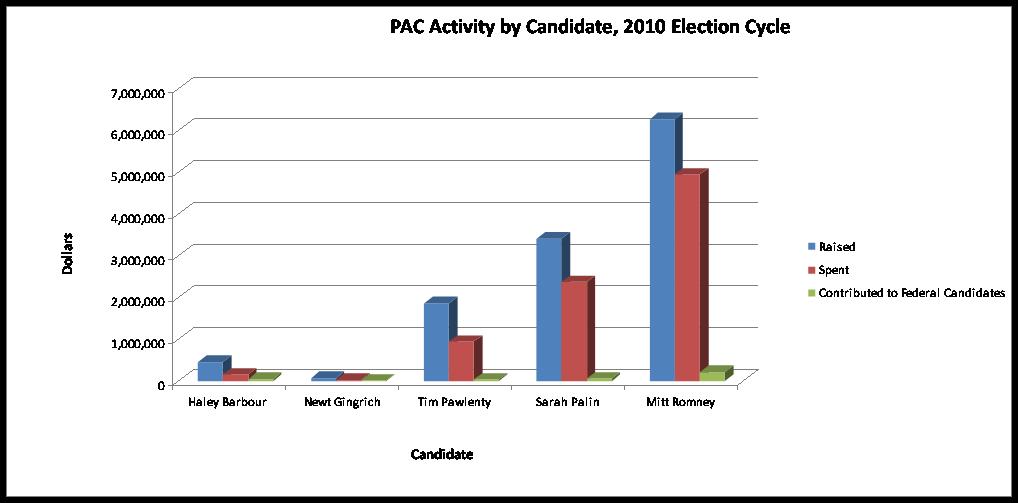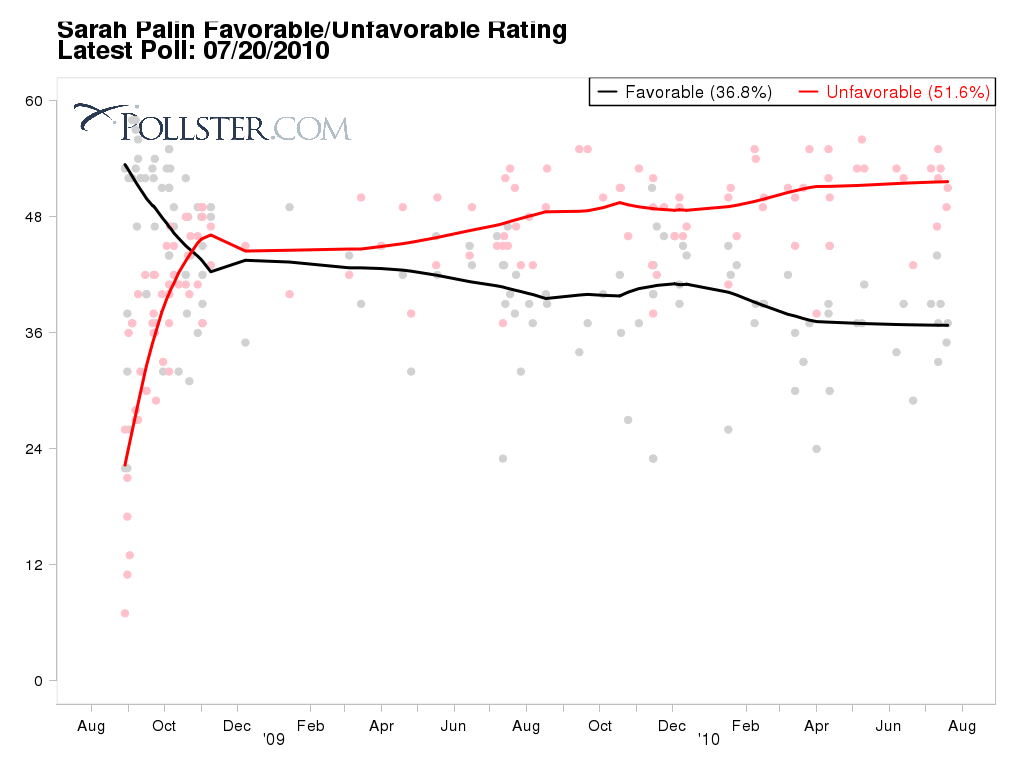“Is it accurate to say that in the United States it is possible to buy an election?” That was the lead question to me yesterday by a reporter from the French daily Liberation. She noted that the current midterm was shaping up to be one of the most expensive in U.S. history, and that the spending seemed to favor Republicans.
Hers is not the first media inquiry to me that began in this fashion and it will undoubtedly not be the last. Indeed, it is clear that much of the mainstream media, and pundits in the blogosphere as well, are going to frame this election as one in which Republicans “bought” victories in a number of close races, due in large part to the Citizens United case which allows corporations and labor unions to make independent campaign expenditures. Without commenting on the merits of the Supreme Court’s decision, let me suggest (as I tried to do with the French reporter) that the Citizens United decision is likely not the primary reason for the extraordinary fundraising that has taken place to date. Instead, the Republican resurgence in fundraising is likely fueled by the same set of factors that led to the Tea Party movement: the rise of partisan issue activists. These are precisely the same type of contributors, but on the other side of the ideological ledger, that led to Obama’s record-breaking fundraising in 2008 and contributed to the Democratic fundraising advantages during the last two campaign cycles.
There are a number of reasons for the Republican resurgence during this election cycle, then, but they have little to do with Citizens United.
First, keep in mind that the cost of congressional races has been increasing for some time, beginning long before the Citizens United decision this past January. Even controlling for inflation, spending on congressional races has more than doubled during the last three decades. There are several reasons why this has occurred, but it reflects both supply and demand; that is, it’s easier to raise money and it costs more to run for the House and Senate. On the supply side, there has been an increase in the number and willingness of issue activists to contribute money to support like-minded candidates, and there is some evidence that the candidates who choose to run are increasingly issue-oriented. That is, their choice to participate in politics is more likely to be motivated by policy concerns.
At the same time, national parties have morphed from a federation of locally-controlled factions dealing mainly in patronage into efficient fundraising machines that raise and distribute large chunks of money on a national scale. In terms of money raised, the Democratic Party continues to lead the Republicans, but both parties have been very effective at raising money and distributing it to key races across the country. (As I show below, the Democratic Congressional Campaign committee is the biggest source of outside money during this campaign cycle, ahead even of the Chamber of Commerce, although the latter has received most of the media scrutiny.)
Finally, the rise of the internet has made it easier to tap into the pockets of activists. My colleague Bert Johnson has written about this (and is giving a talk on this topic this afternoon) but the bulk of these internet donors are issue activists who tend to be extremely partisan.
On the demand side, campaigns are more expensive due to a greater reliance on media buys, polling and other public relation strategies – all of which cost money. Moreover, there are a number of reasons why campaigning will be even more costly during this election cycle, and that candidates will be even more motivated to raise money. Most notably, there are an extraordinary number of competitive House and Senate races. Charlie Cook lists 92 seats as “toss-ups” or “leaning” toward one candidate. Of these, 87 are occupied by Democrats, and only 7 by Republicans. Stu Rothenberg puts the number of seats in play at 97. Of those, 88 are occupied by Democrats. According to Chris Cillizza the previous highest number of races deemed competitive (toss up or leaning) by Cook going back two decades was 58 in 1998. In 2006, when Democrats regained control of Congress, only 54 (nine Democratic, 45 Republican) races were deemed competitive by Cook, and in 2008 that number was 53 (13 Democratic, 40 Republican).
When races are competitive, candidates feel compelled to raise more money – and contributors are more willing to donate. Here, for example, are the top 2010 races attracting outside spending, according to the Open Secrets website.
| Race | Total | For Dems | Against Dems | For Repubs | Against Repubs |
| Colorado Senate | $18,694,122 | $464,928 | $5,791,734 | $921,360 | $4,626,530 |
| Arkansas Senate | $13,074,600 | $5,482,509 | $3,039,567 | $110,490 | $24,500 |
| Pennsylvania Senate | $10,728,669 | $1,987,275 | $2,710,401 | $907,243 | $4,040,984 |
| Missouri Senate | $9,838,373 | $312,353 | $2,611,941 | $805,701 | $3,820,764 |
| Massachusetts Senate | $9,293,796 | $4,393,055 | $-180 | $924,944 | $1,849,934 |
| Nevada Senate | $8,428,495 | $652,389 | $3,348,715 | $1,683,413 | $1,103,754 |
| Illinois Senate | $6,200,079 | $52,509 | $3,647,156 | $150,302 | $1,850,112 |
| Washington Senate | $5,776,402 | $267,115 | $3,196,204 | $259,364 | $1,413,309 |
| California Senate | $5,101,852 | $126,307 | $281,319 | $563,454 | $103,298 |
| New York District 20 | $5,046,978 | $1,642,257 | $2,019,035 | $807,877 | $545,029 |
Note that they are all competitive Senate races, with the exception of New York’s 20th congressional district race. Simply put, close contests attract donations, and there are an historically high number of these races this year.
Moreover, both incumbents and challengers are increasingly relying on donations from individuals outside their electoral district. For example, in Nevada’s Senate race, Senate majority leader Harry Reid had raised a staggering $19 million through June, more than six times that raised by his opponent Sharon Angle. However, Angle has since announced that she raised an additional $14 million for the most recent fundraising quarter. (Reid has not yet released his latest fundraising totals but presumably he remains far ahead of her.) According to the Center for Responsive Politics, only 7 candidates managed to raise more than $14 million for the entire 2008 electoral cycle. Of the amount contributed to Reid, fully 77% came from out of state. The figures are similar for Angle – 74% of her money came from out of state. (By the way, can you guess which Senator raised the greatest proportion of funds from out of state sources? Answer below.)
The growing reliance on out-of-state contributions is another indication that midterm elections are increasingly nationalized, which also contributes to the increase in campaign spending and funding. Here is a list compiled by the Open Secrets people of the top outside groups funding congressional and Senate races in 2010:
Top Groups Making Outside Expenditures in 2010 Elections
| Organization | Total | View* | Independent Expenditures |
Elec Comm |
Comm Costs |
Super PAC |
527s† | 501c |
| Democratic Congressional Campaign Cmte | $22,993,802 | L | $22,993,802 | $0 | $0 | |||
| US Chamber of Commerce | $22,833,777 | C | $0 | $22,833,777 | $0 | x | ||
| National Republican Congressional Cmte | $22,362,960 | C | $22,362,960 | $0 | $0 | |||
| Democratic Senatorial Campaign Cmte | $16,935,708 | L | $16,935,708 | $0 | $0 | |||
| American Crossroads | $9,599,732 | C | $9,599,732 | $0 | $0 | x | X | |
| Service Employees International Union | $9,390,502 | L | $9,368,246 | $0 | $22,256 | X | x | |
| Americans for Job Security | $7,999,353 | C | $4,395,302 | $3,604,051 | $0 | x | ||
| Crossroads Grassroots Policy Strategies | $7,914,721 | C | $6,809,939 | $1,104,782 | $0 | x | ||
| American Fedn of St/Cnty/Munic Employees | $7,798,626 | L | $7,443,415 | $68,539 | $286,672 | X | x | |
| American Future Fund | $7,679,346 | C | $6,000,427 | $1,678,919 | $0 | x | ||
Note that the two parties’ congressional fundraising arms, led by the Democrats, are among the biggest outside contributors.
My point is that there nothing to indicate that the system of campaign contributions and spending is any more “broken” this cycle than it has been in previous election years. What has changed is where the money is flowing, and through which channels. In 2006 and again in 2008, the constellation of long and short-term factors favored the Democrats when it came to fundraising. In this electoral cycle, the Democratic campaign committees continue to hold an edge over their Republican counterparts. But Republican-backed groups are helping Republicans overcome this gap through independent expenditures, much of it channeled through new types of groups, such as 501 (c) groups. But if, as some suggest, new fundraising and expenditures totals are reached this year, it will likely have little to do with Citizens United and far more with factors that have been affecting campaigns for several election cycles and which are disproportionately favoring Republicans this time around.
I don’t doubt that if the Republicans regain control of the House and the Senate in 2010, the media – with the tacit encouragement of Democrats – will frame the outcome in terms of a Republican fundraising advantage aided and abetted by the Citizens United decision. The evidence so far, however, suggests the amount of money raised during this campaign cycle owes much more to a combination of competitive races against the backdrop of increasingly nationalized congressional elections than it does to the Supreme Court’s decision.
Oh, and that Senator who is relying the most on out-of-state donations? That would be Vermont’s own Pat Leahy.


